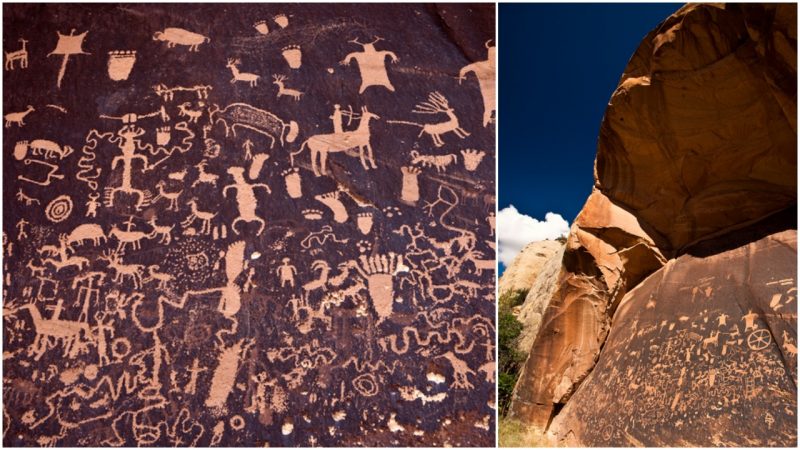It’s all the news that’s fit to print–2,000 years’ worth of it, in fact–crammed on a 200-square-foot surface. Now if we only knew how to read it.
Newspaper Rock is a sandstone panel in San Juan County, Utah, that is covered with hundreds of petroglyphs. Snakes and broad-shouldered animal-headed men are crammed in with shapes that resemble wagon wheels, bighorn sheep, lizards, and turtles. Men on horseback are also shown late in the art’s history–starting about 650 years ago.
Herds of deer and lone bison dodge hunters and oversized human footprints stride carefully through it all.
The art was made by using a sharp object to peck away the desert varnish, a hard, dark film of oxidation that forms on rock in the arid Southwest. The lighter cream-colored rock beneath glows brightly still, making for a dramatic picture.
So who made it? Some of the area’s earliest dwellers. Archaeologists say the artwork was carved by Native Americans in both prehistoric and early historic periods.
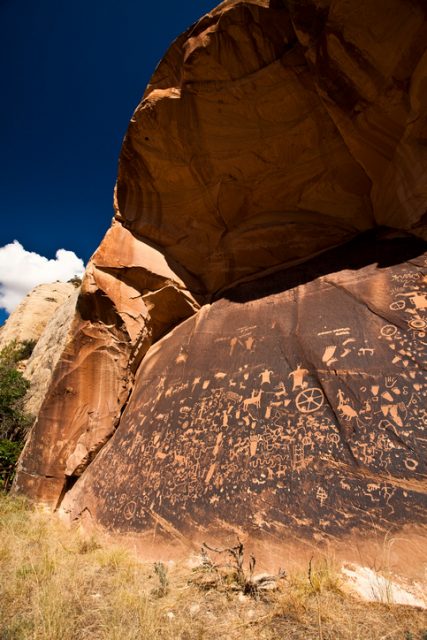
The work has been attributed to peoples from the Archaic, Anasazi, Fremont, Navajo, Anglo, and Pueblo cultures, and while rock art is difficult to date, evidence indicates that the first engravings were done about 2,000 years ago. Many of the clans and cultures that produced it are gone; the story of what happened to them is lost to the desert winds.
The Navajo are still in the area, and they have their own name for the site. They call it “Tse’ Hone”–the rock that tells a story.
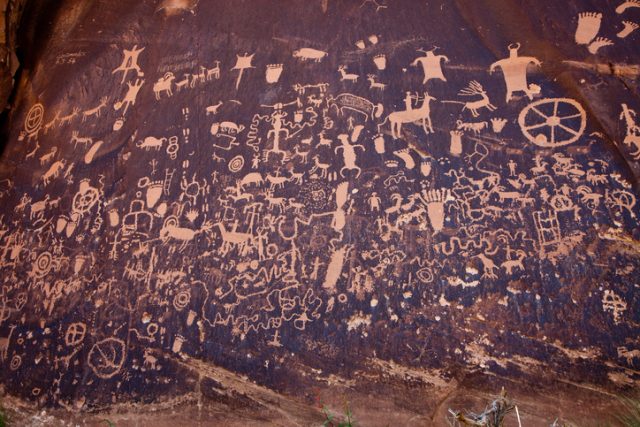
Rock art sites can be found all across the Desert Southwest, some of them nothing more than a hand print or a few scratches and many of them tucked in discreet places, such as under a small rock ledge.
Newspaper Rock is the motherlode of such work. It checks all of the boxes on a park ranger’s or archaeologist’s dream list: it’s well-preserved, easily accessible, and one of the largest groups of pictographs found in the world. More than 650 images have been identified.
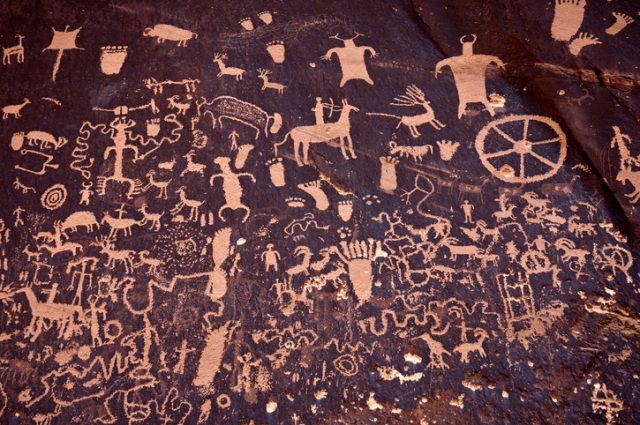
While the cream-colored Wingate sandstone provides good contrast against the desert varnish canvas, some of the older art samples are darkening, disappearing in time under the desert varnish that is taking hold where it had once been chipped away.
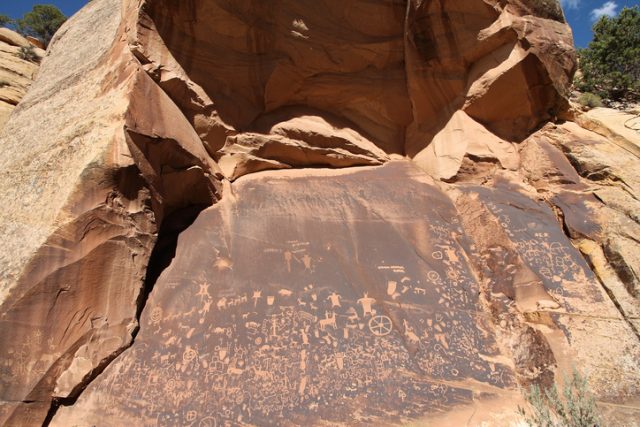
Newspaper Rock was designated a state historic monument in 1961. In 1976, it was added to the National Register of Historic Places as Indian Creek State Park.
Luckily for visitors, the site is not far from the well-traveled access road to the popular Needles District of Canyonlands National Park. It’s also just over 50 miles from Moab, Utah.
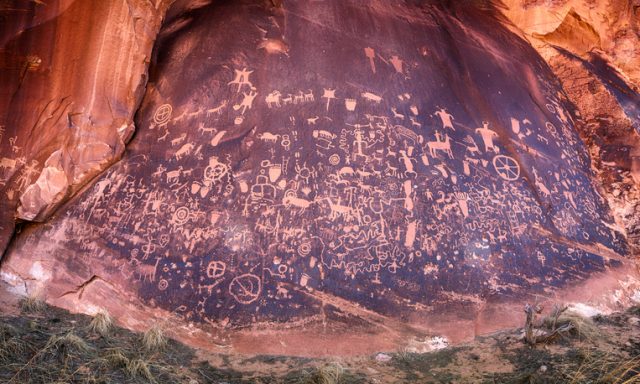
It’s hard not to be mesmerized by the images left so long ago, and there’s good “news” for those who really want to see more. There’s actually another Newspaper Rock, this one in Arizona. It’s part of the Petrified Forest National Park in the northeast part of that state.
As with the Utah site, there are about 650 different images, but there are also key differences. In Arizona, for instance, the “newspaper” is on more than one rock, although the rocks are grouped near each other.
Still, the large collection of images is impressive.
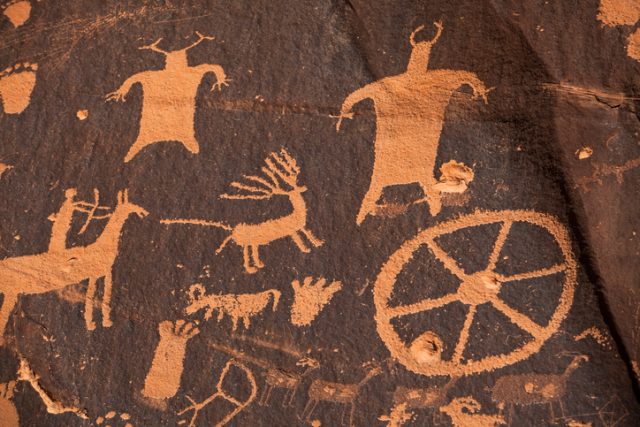
In some cases, people who stop in to see the petrified wood that gives the national park its name have no idea that the petroglyph collection is part of the park. And for many, the ancient rock art ends up overshadowing the fossilized logs and stumps lying on the edge of the Painted Desert.
As with the Utah-version, the Arizona images have varied style, indicating an array of artists and periods. It’s hard to pin down where they all came from, but experts believe many came from the nearby Puerco Pueblo. Some of the rock art samples are believed to indicate calendar events, family and clan symbols, territory markers, and even spiritual symbolism.
Terri Likens‘ byline has appeared in newspapers around the world through the Associated Press. She has also done work for ABCNews, the BBC, and magazines that include High Country News, American Profile and Plateau Journal. She lives just east of Nashville, Tenn.
